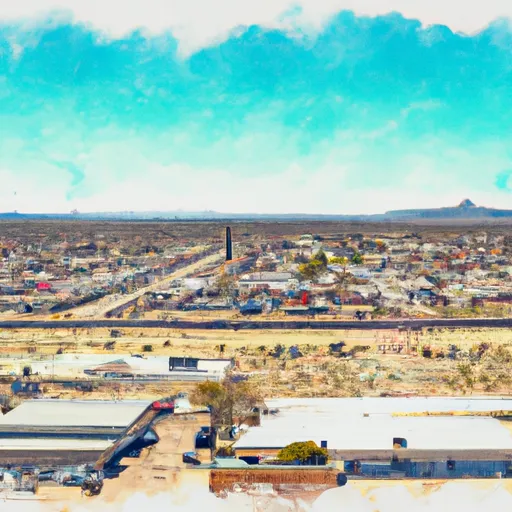-
 Snoflo Premium
Snoflo Premium
Get unlimited access to all our content
With no Ad interruptions! - Start Your Free Trial Login with existing account
Mojave
Eden Index
Climate
8.7
•
Recreation
2.2
•
Community
1.8
•
Safeguard
4.7/10

Mojave, California is a small town located in the Mojave Desert region of the state. The climate in Mojave is characterized by hot, dry summers and mild winters. With an average annual rainfall of only 6 inches, the area is classified as a desert. The dry climate and arid conditions make it an ideal location for outdoor enthusiasts and adventurers.
Hydrologically, Mojave is part of the Mojave River Basin, with the Mojave River being the main water source for the region. However, due to limited rainfall and high evaporation rates, water availability is scarce. The desert landscape is dotted with dry washes and intermittent streams, creating a unique hydrological environment.
Despite its arid surroundings, Mojave offers a variety of outdoor recreation opportunities. The nearby Mojave National Preserve provides opportunities for hiking, camping, and wildlife viewing. The El Paso Mountains, located to the west, offer scenic landscapes and off-roading trails. Additionally, visitors can explore the Red Rock Canyon State Park, known for its stunning geological formations and hiking trails. Overall, Mojave offers a desert oasis for outdoor enthusiasts seeking adventure in a unique and challenging environment.
What is the Eden Index?
The Snoflo Eden Index serves as a comprehensive rating system for regions, evaluating their desirability through a holistic assessment of climate health, outdoor recreation opportunities, and natural disaster risk, acknowledging the profound impact of these factors on livability and well-being.
Climate Health Indicator (CHI): 8.7
Mojave receives approximately
180mm of rain per year,
with humidity levels near 62%
and air temperatures averaging around
18°C.
Mojave has a plant hardyness factor of
8, meaning
plants and agriculture in this region tend to thrive here all year round.
By considering the ideal temperature range, reliable water supplies, clean air, and stable seasonal rain or snowpacks, the Climate Health Indicator (CHI) underscores the significance of a healthy climate as the foundation for quality living.
A healthy climate is paramount for ensuring a high quality of life and livability in a region, fostering both physical well-being and environmental harmony. This can be characterized by ideal temperatures, reliable access to water supplies, clean air, and consistent seasonal rain or snowpacks.
Weather Forecast
Streamflow Conditions
Northern Mojave
Area Rivers
Northern Mojave
Snowpack Depths
Northern Mojave
Reservoir Storage Capacity
Northern Mojave
Groundwater Levels
Recreational Opportunity Index (ROI): 2.2
The Recreational Opportunity Index (ROI) recognizes the value of outdoor recreational options, such as parks, hiking trails, camping sites, and fishing spots, while acknowledging that climate plays a pivotal role in ensuring the comfort and consistency of these experiences.
Access to outdoor recreational opportunities, encompassing activities such as parks, hiking, camping, and fishing, is crucial for overall well-being, and the climate plays a pivotal role in enabling and enhancing these experiences, ensuring that individuals can engage in nature-based activities comfortably and consistently.
Camping Areas
| Campground | Campsites | Reservations | Toilets | Showers | Elevation |
|---|---|---|---|---|---|
| Red Rock Canyon State Park | 50 | 2,520 ft | |||
| Antelope Valley Fairgrounds RV Park | 62 | 2,313 ft | |||
| Jawbone Canyon Off Hwy Area | None | 2,404 ft | |||
| Dove Springs Off Hwy Area | None | 3,254 ft |
Nearby Fishing
Nearby Ski Areas
Catastrophe Safeguard Index (CSI):
The Catastrophe Safeguard Index (CSI) recognizes that natural disaster risk, encompassing floods, fires, hurricanes, and tornadoes, can drastically affect safety and the overall appeal of an area.
The level of natural disaster risk in a region significantly affects safety and the overall livability, with climate change amplifying these risks by potentially increasing the frequency and intensity of events like floods, fires, hurricanes, and tornadoes, thereby posing substantial challenges to community resilience and well-being.
Community Resilience Indicator (CRI): 1.8
The Community Resilience Indicator (CRI) recognizes that education, healthcare, and socioeconomics are crucial to the well-being of a region. The CRI acknowledges the profound impact of these elements on residents' overall quality of life. By evaluating educational resources, healthcare accessibility, and economic inclusivity, the index captures the essential aspects that contribute to a thriving community, fostering resident satisfaction, equity, and social cohesion.

